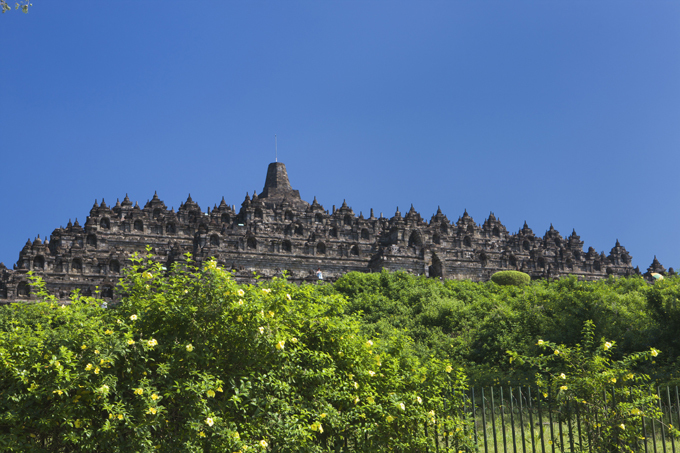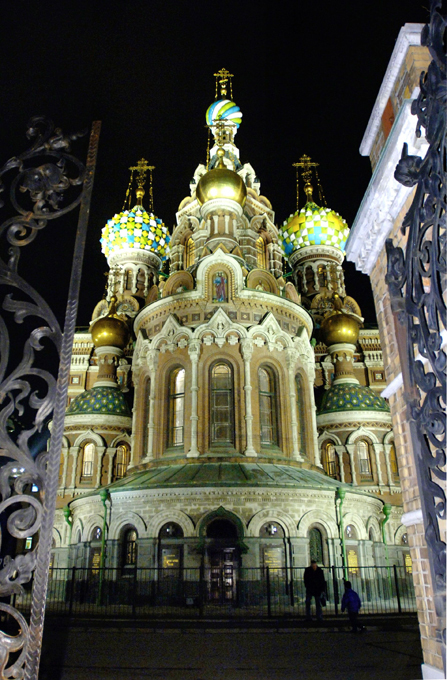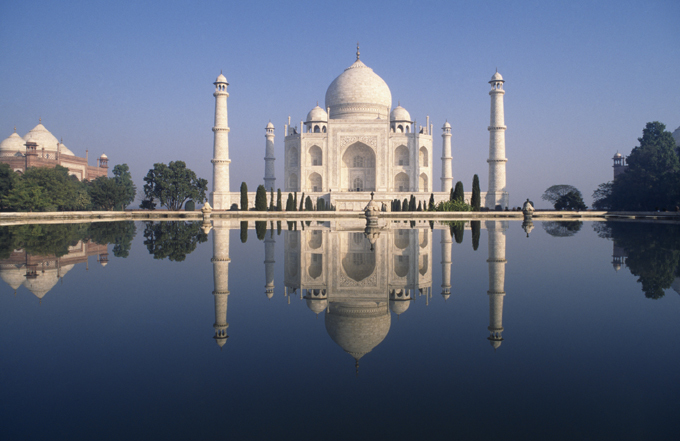Eight wonders of the world in architecture

Angkor Wat or "Capital Temple" is a temple complex in Cambodia. It is the largest religious monument in the world, with the site measuring 162.6 hectares (1,626,000 sq meters). It was originally constructed as a Hindu temple for the Khmer Empire, gradually transforming into a Buddhist temple toward the end of the 12th century. It was built by the Khmer King Suryavarman II in the early 12th century in Yaśodharapura, present-day Angkor, the capital of the Khmer Empire, as his state temple and eventual mausoleum. Breaking from the Shaiva tradition of previous kings, Angkor Wat was instead dedicated to Vishnu. As the best-preserved temple at the site, it is the only one to have remained a significant religious center since its foundation
Angkor Wat or "Capital Temple" is a temple complex in Cambodia. It is the largest religious monument in the world, with the site measuring 162.6 hectares (1,626,000 sq meters). It was originally constructed as a Hindu temple for the Khmer Empire, gradually transforming into a Buddhist temple toward the end of the 12th century. It was built by the Khmer King Suryavarman II in the early 12th century in Yaśodharapura, present-day Angkor, the capital of the Khmer Empire, as his state temple and eventual mausoleum. Breaking from the Shaiva tradition of previous kings, Angkor Wat was instead dedicated to Vishnu. As the best-preserved temple at the site, it is the only one to have remained a significant religious center since its foundation

The Bayon is a well-known and richly decorated Khmer temple at Angkor in Cambodia. Built in the late 12th or early 13th century as the official state temple of the Mahayana Buddhist King Jayavarman VII, the Bayon stands at the centre of Jayavarman's capital, Angkor Thom. Following Jayavarman's death, it was modified and augmented by later Hindu and Theravada Buddhist kings in accordance with their own religious preferences. The Bayon's most distinctive feature is the multitude of serene and smiling stone faces on the many towers which jut out from the upper terrace and cluster around its central peak
The Bayon is a well-known and richly decorated Khmer temple at Angkor in Cambodia. Built in the late 12th or early 13th century as the official state temple of the Mahayana Buddhist King Jayavarman VII, the Bayon stands at the centre of Jayavarman's capital, Angkor Thom. Following Jayavarman's death, it was modified and augmented by later Hindu and Theravada Buddhist kings in accordance with their own religious preferences. The Bayon's most distinctive feature is the multitude of serene and smiling stone faces on the many towers which jut out from the upper terrace and cluster around its central peak

Borobudur, or Barabudur, is a 9th-century Mahayana Buddhist Temple in Magelang, Central Java, Indonesia. The monument consists of nine stacked platforms, six square and three circular, topped by a central dome. The temple is decorated with 2,672 relief panels and 504 Buddha statues. The central dome is surrounded by 72 Buddha statues, each seated inside a perforated stupa. It is the world's largest Buddhist temple, as well as one of the greatest Buddhist monuments in the world
Borobudur, or Barabudur, is a 9th-century Mahayana Buddhist Temple in Magelang, Central Java, Indonesia. The monument consists of nine stacked platforms, six square and three circular, topped by a central dome. The temple is decorated with 2,672 relief panels and 504 Buddha statues. The central dome is surrounded by 72 Buddha statues, each seated inside a perforated stupa. It is the world's largest Buddhist temple, as well as one of the greatest Buddhist monuments in the world

The Church of the Savior on Spilled Blood is one of the main sights of St. Petersburg, Russia. This Church was built on the site where Emperor Alexander II was fatally wounded in March 1881.The church was built between 1883 and 1907. The construction was funded by the imperial family. The Church contains over 7500 square meters of mosaics-according to its restorers, more than any other church in the world.
The Church of the Savior on Spilled Blood is one of the main sights of St. Petersburg, Russia. This Church was built on the site where Emperor Alexander II was fatally wounded in March 1881.The church was built between 1883 and 1907. The construction was funded by the imperial family. The Church contains over 7500 square meters of mosaics-according to its restorers, more than any other church in the world.

The Taj Mahal was commissioned in 1632 by the Mughal emperor, Shah Jahan (reigned 1628-1658), to house the tomb of his favorite wife, Mumtaz Mahal. The tomb is the centrepiece of a 42-acre complex. The Taj Mahal complex is believed to have been completed in its entirety in 1653 at a cost estimated at the time to be around 32 million rupees, which in 2015 would be approximately 52.8 billion rupees (US$827 million). The Taj Mahal was designated as a UNESCO World Heritage Site in 1983 for being "the jewel of Muslim art in India and one of the universally admired masterpieces of the world's heritage". Described by Nobel laureate Rabindranath Tagore as "the tear-drop on the cheek of time", it is regarded by many as the best example of Mughal architecture and a symbol of India's rich history. The Taj Mahal attracts 7-8 million visitors a year
The Taj Mahal was commissioned in 1632 by the Mughal emperor, Shah Jahan (reigned 1628-1658), to house the tomb of his favorite wife, Mumtaz Mahal. The tomb is the centrepiece of a 42-acre complex. The Taj Mahal complex is believed to have been completed in its entirety in 1653 at a cost estimated at the time to be around 32 million rupees, which in 2015 would be approximately 52.8 billion rupees (US$827 million). The Taj Mahal was designated as a UNESCO World Heritage Site in 1983 for being "the jewel of Muslim art in India and one of the universally admired masterpieces of the world's heritage". Described by Nobel laureate Rabindranath Tagore as "the tear-drop on the cheek of time", it is regarded by many as the best example of Mughal architecture and a symbol of India's rich history. The Taj Mahal attracts 7-8 million visitors a year

Machu Picchu is a 15th-century Inca site located 2,430 metres (7,970 ft) above sea level in Peru. Most archaeologists believe that Machu Picchu was built as an estate for the Inca emperor Pachacuti (1438-1472). The Incas built the estate around 1450, but abandoned it a century later at the time of the Spanish Conquest. Machu Picchu was built in the classical Inca style, with polished dry-stone walls. Its three primary structures are the Inti Watana, the Temple of the Sun, and the Room of the Three Windows.
Machu Picchu is a 15th-century Inca site located 2,430 metres (7,970 ft) above sea level in Peru. Most archaeologists believe that Machu Picchu was built as an estate for the Inca emperor Pachacuti (1438-1472). The Incas built the estate around 1450, but abandoned it a century later at the time of the Spanish Conquest. Machu Picchu was built in the classical Inca style, with polished dry-stone walls. Its three primary structures are the Inti Watana, the Temple of the Sun, and the Room of the Three Windows.

The Papal Basilica of St. Peter in the Vatican, or simply St. Peter's Basilica in Vatican City, the papal enclave within the city of Rome, Italy. Designed principally by Donato Bramante, Michelangelo, Carlo Maderno and Gian Lorenzo Bernini, St. Peter's is the most renowned work of Renaissance architecture and one of the largest churches in the world. While it is neither the mother church of the Catholic Church nor the cathedral of the Diocese of Rome, St. Peter's is regarded as one of the holiest Catholic shrines. It has been described as "holding a unique position in the Christian world" and as "the greatest of all churches of Christendom."
The Papal Basilica of St. Peter in the Vatican, or simply St. Peter's Basilica in Vatican City, the papal enclave within the city of Rome, Italy. Designed principally by Donato Bramante, Michelangelo, Carlo Maderno and Gian Lorenzo Bernini, St. Peter's is the most renowned work of Renaissance architecture and one of the largest churches in the world. While it is neither the mother church of the Catholic Church nor the cathedral of the Diocese of Rome, St. Peter's is regarded as one of the holiest Catholic shrines. It has been described as "holding a unique position in the Christian world" and as "the greatest of all churches of Christendom."

Sheikh Zayed Grand Mosque is located in Abu Dhabi, the capital city of the United Arab Emirates and is considered to be the key for worship in the country. During Eid it can be visited by more than 41,000 people. The library, located in the north/east minaret, serves the community with classic books and publications addressing a range of Islamic subjects: sciences, civilization, calligraphy, the arts, coins and includes some rare publications dating back more than 200 years
Sheikh Zayed Grand Mosque is located in Abu Dhabi, the capital city of the United Arab Emirates and is considered to be the key for worship in the country. During Eid it can be visited by more than 41,000 people. The library, located in the north/east minaret, serves the community with classic books and publications addressing a range of Islamic subjects: sciences, civilization, calligraphy, the arts, coins and includes some rare publications dating back more than 200 years



